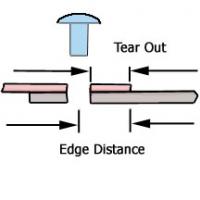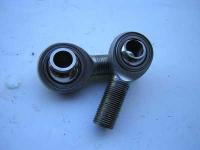

|
Pagine: 1 ... 3 4 [5] 6 
|
 |
|
| Emi |
...e quattro! |
 |
| Settembre 02, 2010, 15:19:48 pm |
| Utente standard, V12, 58199 posts |
|
|
spettacolo losna che porta avanti un treAD DA SOLO PARLANDO CON SE STESSO ;d ;d ;d
|
|
|
"Casey è il pilota con il più grande talento che io abbia mai incontrato" JLorenzo, Stoner a Rossi “La tua ambizione è superiore al tuo talento”… mancherai Casey, per me sei a livello del mito Kevin
|
|
|
| Losna |
|
![]() |
| Settembre 02, 2010, 15:25:35 pm |
| Visitatore, , posts |
|
< staff: rimosso su richiesta dell'utente > « Ultima modifica: Settembre 02, 2010, 15:53:10 pm da Losna » |
|
|
|
|
|
  Loggato Loggato
|
|
|
| Motesto |
|
![]() |
| Settembre 02, 2010, 16:50:04 pm |
| Visitatore, , posts |
|
|
|
  Loggato Loggato
|
|
|
| Motesto |
|
![]() |
| Settembre 02, 2010, 17:26:37 pm |
| Visitatore, , posts |
|
Quanto al double shear, ecco qua: ----------- As AME's, we should be aware of the different strengths available through the various types of joints available. In order to help with this explanation, we should be familiar with the idea of "tear-out." In the diagram below, tear-out is shown as the material between the edge of the fastener hole, and the edge of the material. This is the amount of metal that will be lost or damaged if the stresses encountered are beyond the yeild point of the material.  The illustration below shows a double row, single shear lap joint. Other types of joints can attain higher strength by adding rows of rivets, or layers of material.   Just above is a single shear butt joint. It employs a doubler under the shop heads to pass stresses through to the skins. Below, a double shear butt joint passes loads from the green and blue skins through the dark doublers.   This last illustration shows a double shear lap joint passing stresses from the yellow skins into the blue skin. ------ Fonte: http://www.mlevel3.com/BCIT/Rivet%20layout2.htmLe due illustrazioni più in basso mostrano appunto due tipi di giunzione "double shear". C'è un qualche cavolo di ingegnere che sa tradurre il termini in italiano? A me viene un "giunzione/attacco a doppio taglio", perchè shear significa "a taglio", ma non sono sicuro della terminologia italiana... Dogui, pure tu che vendi rottami metallici, non conosci il termine? semplice uno snodo cosi  lavora a taglio su un solo punto (tipicamente un foro passante sul telaio). un uniball  lavora invece su due parti , la parte sul telaio (come nel precedente caso) e la parte lato "rinforzo" in pratica lavora su tutte e due le faccie . per questo si parla di lavoro "a doppio taglio" |
|
|
|
|
|
  Loggato Loggato
|
|
|
| Motesto |
|
![]() |
| Settembre 02, 2010, 17:35:15 pm |
| Visitatore, , posts |
|
vediamo vediamo.... "double shear" è un tipo di attacco, di giunzione. Si può realizzare con rivettatura o con vite+dado, e si ha ad esempio in questa immagine:  Sebbene il concetto sia chiarissimo, non mi sovviene una definizione italiana.... INGEGNERIIIII!!!!! Dove siete? che poi è il concetto di quest'immagine.. dai paolo!!!!!! |
|
|
|
|
|
  Loggato Loggato
|
|
|
| alura |
|
 |
| Settembre 02, 2010, 19:20:52 pm |
| webmaster, V12, 50851 posts |
|
cristo fermatelo!!!!
Ahhhhh mi hai ammazzato !!!!  |
|
|
Kia Sorento = Oso nei Kart
|
|
|
Pagine: 1 ... 3 4 [5] 6 
|

|
|

|
